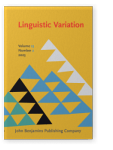Vol. 23:2 (2023) ► pp.245–280
Towards a syntactic understanding of connective particles
The final pero phenomenon in Bahiense Spanish
The contrastive connector pero ‘but’ is rigidly sentence-initial in most Spanish varieties. However, at least three Spanish dialects allow locating it at the end of a sentence. This paper discusses the properties of final pero as attested in the dialect spoken in Bahia Blanca (Argentina), i.e., the so-called pero bahiense. First, I demonstrate that pero bahiense cannot be reduced to superficially similar phenomena in Spanish. Then, I offer a comparison between pero bahiense and its sentence-initial counterpart showing that they share a number of non-trivial characteristics but also differ in relevant regards. Based on these properties, I advance an account of the pero bahiense phenomenon according to which instances of pero that express concessivity may optionally attract the CP projection to their left. While the analysis does not cover all properties of pero bahiense, it highlights aspects of the syntax of connective particles that require further investigation.
Article outline
- 1.Introduction: The landscape of final pero
- 2.What pero bahiense is not
- 3.Comparing initial pero and pero bahiense
- 4.Towards an understanding of the syntax of connective particles
- 5.Concluding remarks
- Acknowledgements
- Notes
-
References
